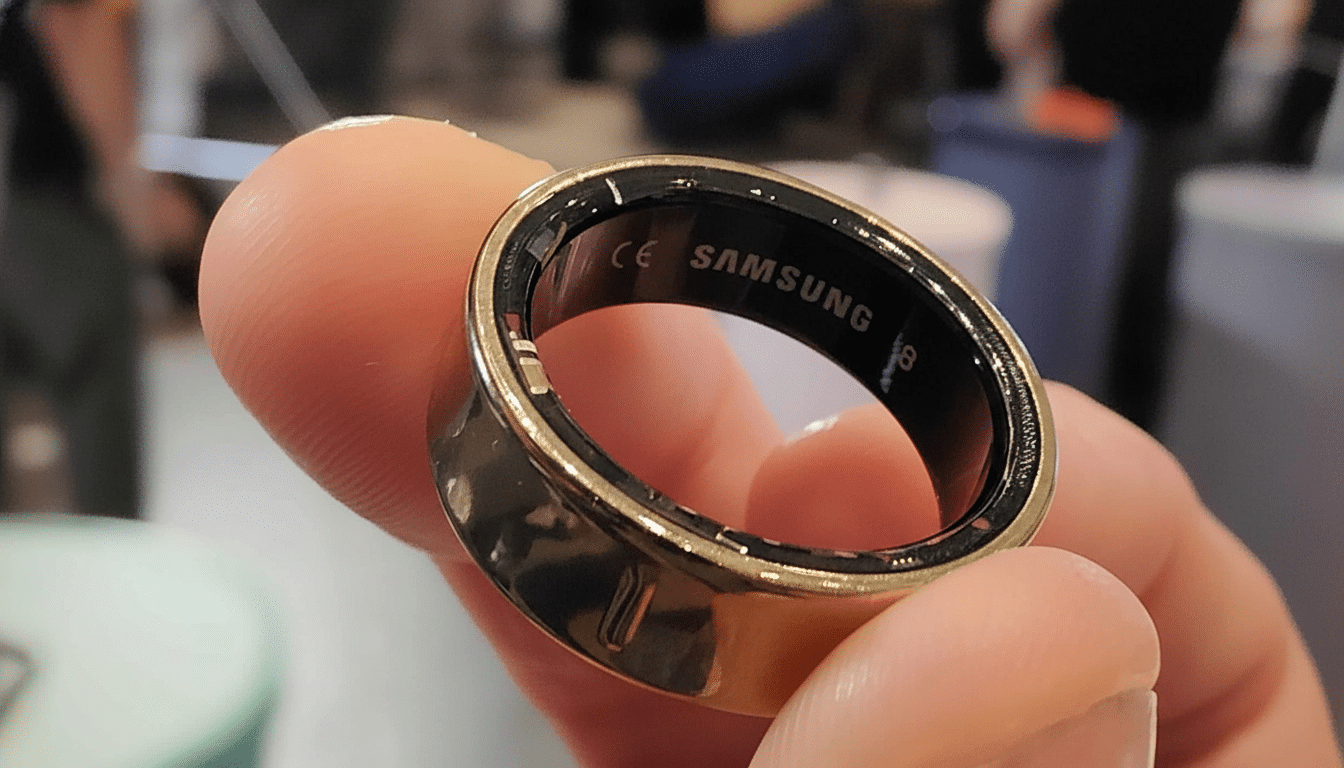A tech creator alleged a swollen Samsung Galaxy Ring battery had the wearable stuck on his finger and prevented him from boarding at the gate, before needing to be removed in a hospital—an unfortunate anecdote for a brand-new class of gadget that relies so heavily on always-on skin contact.
The report, which was also passed around on X by Daniel from the channel ZONEofTECH, is being widely shared among gadget watchers due to its June 15 date and for what it implies about lithium cells inside ultra-compact wearables when it comes to safety, airline ban considerations, and reliability.

What the User Reported About the Galaxy Ring Incident
As Daniel wrote, the ring grew while he was about to board a flight and could not slip off his finger.
An airline staff member said the incident was flagged because it involved a swollen lithium-ion battery, and he says he went to a hospital where doctors removed the ring.
He said that he had been given the Galaxy Ring earlier in the year and that he’d seen stamina deteriorate: battery life, according to him, went down to about a day and a half, nowhere near what’s advertised—days of battery life. He also noted that the cell had no charge when swelling occurred. The specific airport and hospital were not identified, and the account could not be independently confirmed.
Samsung Response and Guidance Following the Report
In a public statement, Samsung’s UK team has confirmed the post and said that it is in direct contact with the user to learn more about this rare case. The company also renewed some basic guidance for stuck rings, saying that soap and water or immersing a hand in cool water can sometimes work before calling in professional help. No advisory, recall, or defect has been issued.
Like any early-cycle wearable, individual user reports invite skepticism. Samsung’s Galaxy Ring is its first mass-market smart ring, basically placing a tiny rechargeable cell inside a rubbery band that stays in contact with the skin for sleep tracking, heart rate, and other data. With that design, considering comfort—and a safe removal process—is crucial.
Airline Rules and Lithium Battery Safety for Wearables
Airlines consider damaged or flawed lithium batteries a safety risk. The devices should be isolated or denied passenger transport if there are indications of swelling, overheating, or smoke, the Federal Aviation Administration and international regulators tell carriers. The FAA has documented hundreds of incidents related to lithium batteries on board airplanes since 2006 across a range of product categories, highlighting the agency’s continuing caution even when it comes to new types of devices.
In reality, if a wearable’s cell looks swollen or damaged at the gate, ground crews can refuse to let you board until it is removed or safely stowed. That can be an especially big problem for a smart ring, like the one in this case, that has gotten stuck because of swelling.

The Reason Why Lithium Cells Swell in Wearables
Battery swelling is usually caused by accumulation of gas inside a cell as the electrolyte decomposes, which can be induced by aging, manufacturing defects, overcharging and deep discharging, or exposure to heat. Standards organizations and safety laboratories like UL Solutions and IEEE point out that mechanical stress in tight containers adds risk: even small expansions against a rigid ring can put pressure—on the wearer’s finger, for example—against the shell.
"Most wearable manufacturers build in protections such as charge control, thermal limits, and strict cell sourcing." Even so, very tiny batteries undergo demanding cycles, and any device that’s in constant contact with skin requires conservative thermal and electrical profiles to avoid discomfort—or worse.
Context From Other Wearables and Safety Recalls
There are few, though not rare, reports of wearables burning users. The U.S. Consumer Product Safety Commission issued a recall in 2022 for one popular fitness smartwatch model after reports of overheating, affecting roughly 1.7 million units. Though a smart ring is a distinct product with a much smaller battery, the episode shows just how closely regulatory authorities and brands keep an eye on heat and battery performance in body-worn tech.
The world of smart rings is growing fast, with health tracking headed to your finger instead of your wrist. And that growth will mean even more focus on battery quality, sealing, and methods for removal—key for a product that, in an anomaly, can become physically hard to take off.
What to Do if a Smart Ring Gets Stuck or Swells
If a ring is warm to the touch, bulging, or deformed, or if battery life suddenly fails, you should stop charging it and try to remove it gently.
- Lubricate the ring with soap and water.
- If necessary, cool the finger with cold water to reduce swelling.
- Try the ring bandaging technique.
- Avoid using twists or levers near the battery.
If the extraction attempt is unsuccessful or the device is broken, you should contact a doctor. A swollen cell must not be punctured. For additional instructions, consult your product manufacturer’s support service. Samsung, for example, recommends contacting it for support and diagnostic tools if necessary.
The recorded case will undoubtedly prompt manufacturers to take a closer look at lithium battery health, early-warning indicators, and safe removal methods in smart rings. Samsung, for example, is already conducting an investigation. If the examination results reveal some kind of pattern and it’s more than just a random defective batch, the company will provide customers with appropriate instructions or services. Until then, it reminds us that all lithium cells, no matter what size and form they may be, deserve exceptional treatment, especially in devices worn 24 hours a day.

